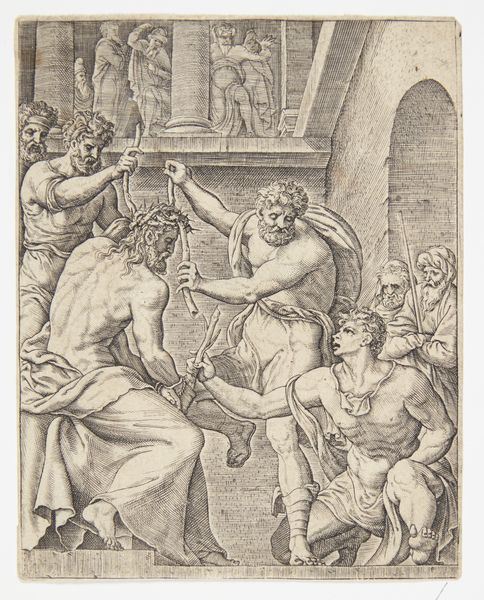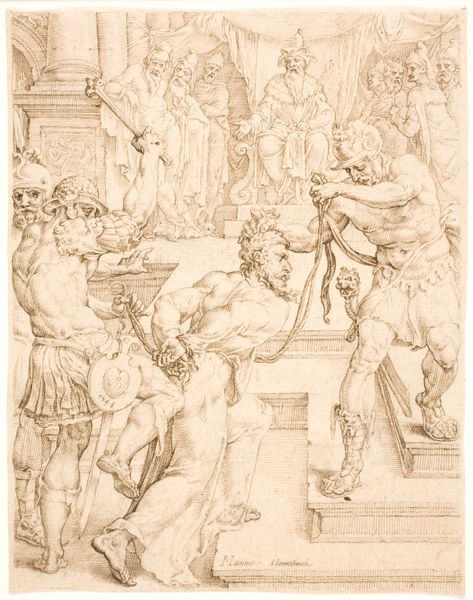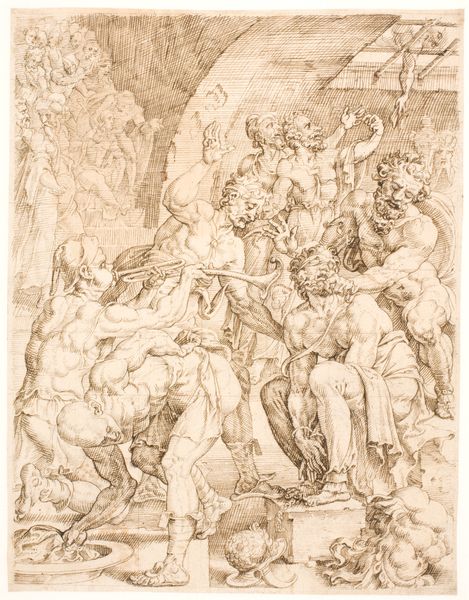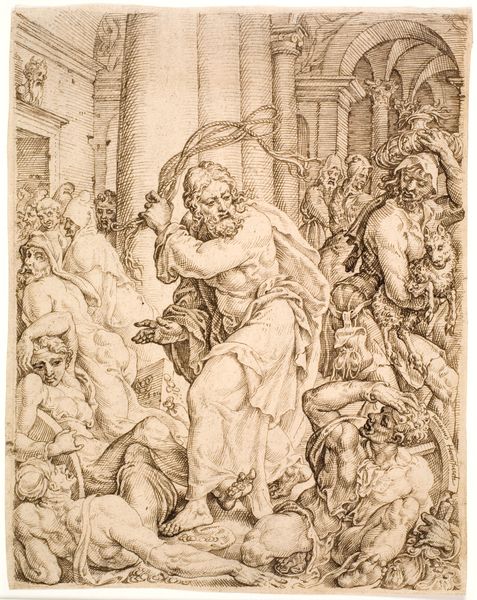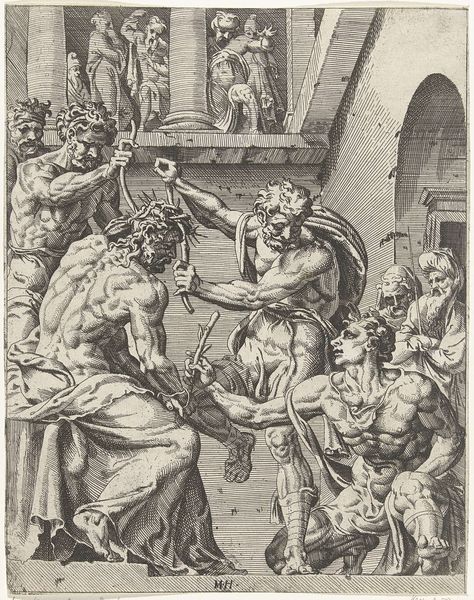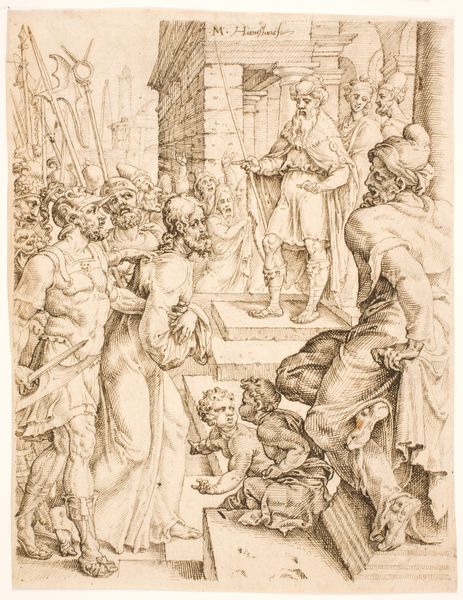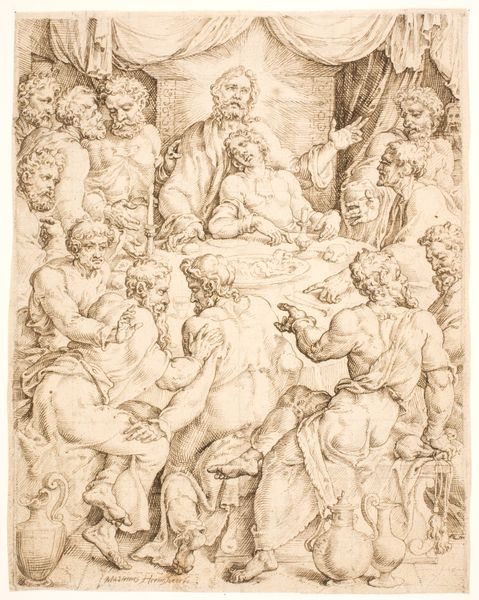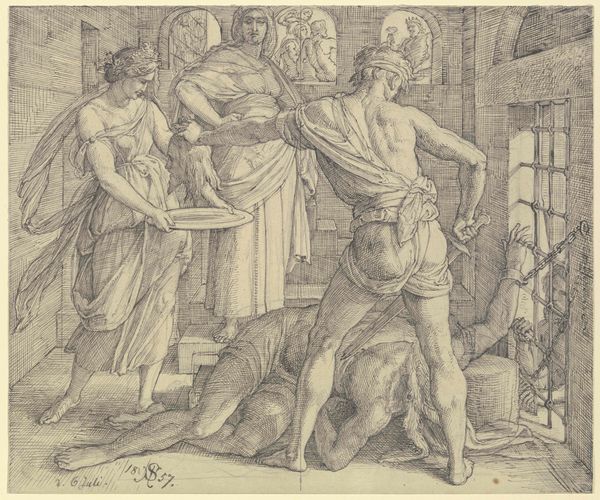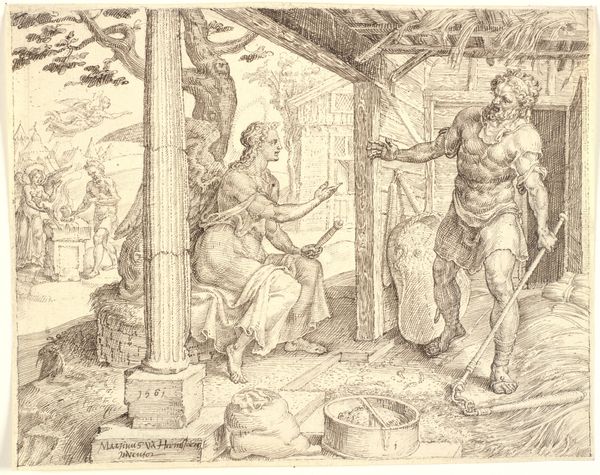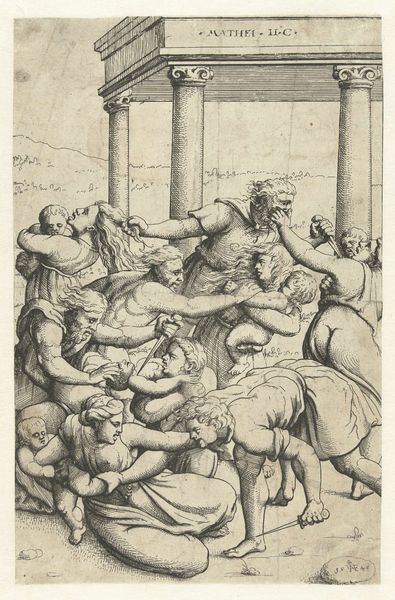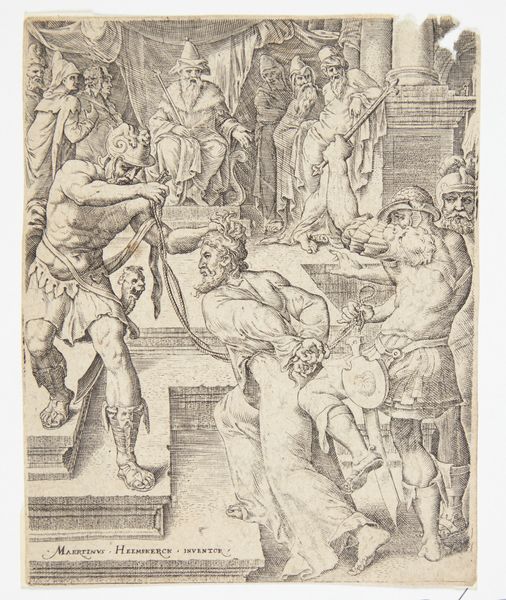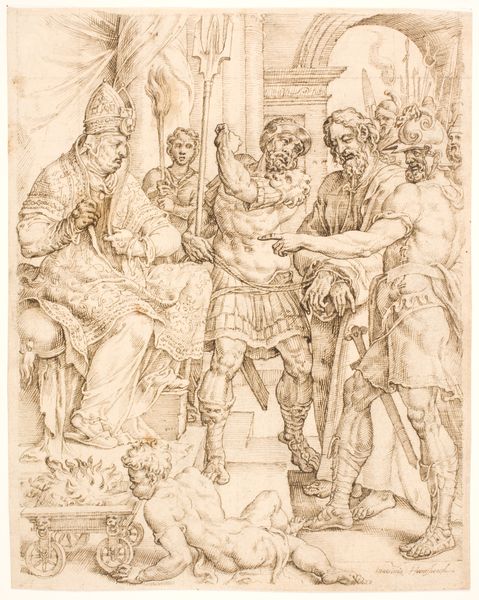
drawing, print, etching
#
drawing
# print
#
etching
#
mannerism
#
figuration
#
history-painting
Dimensions: 255 mm (height) x 204 mm (width) (bladmaal)
Editor: This etching from between 1546 and 1549 by Maarten van Heemskerck depicts "Christ Being Crowned with Thorns." The stark lines of the etching create a really intense, almost claustrophobic feeling. What stands out to you in this piece? Curator: The immediate violence, absolutely. But it's not just the physical act; it’s the systemic abuse of power we witness. Look at how Heemskerck positions Christ. Editor: He's almost cornered, isn't he? Surrounded by figures who seem to relish his suffering. Curator: Precisely! Think about the historical context. This image emerges during a time of religious upheaval, the Reformation. Heemskerck is placing the body of Christ at the intersection of political and religious power. Who benefits from this spectacle of humiliation? How might viewers at the time have read the blatant cruelty, given the growing challenges to established authority? Editor: That makes me think about the figures in the background, on what looks like a balcony. They’re observing, complicit through their inaction. Curator: Exactly. Their passive observation speaks volumes about social structures, about who holds power and who is subjected to it. How might this resonate today, when we consider the roles of bystanders in perpetuating injustice? Editor: So, Heemskerck is not just illustrating a biblical scene, but also commenting on the social and political realities of his time, and maybe even ours? Curator: Art is never created in a vacuum. And our readings of it are never neutral, right? The "Christ Being Crowned with Thorns" compels us to consider how power, belief, and the human body intersect throughout history, and right now. Editor: This makes me see the artwork not just as a historical piece, but as a relevant and important statement. Thanks for sharing your insight. Curator: It was my pleasure, it also makes me consider how religious iconography can represent themes of injustice, thanks to your comment,
Comments
statensmuseumforkunst almost 2 years ago
⋮
This drawing is one of many studies for a series of etchings, the exact number of which remains a bone of contention among scholars. One expert lists 24 prints, another 28. No direct link between the series' drawings Apart from a certain motivic consistency, there is no direct link between the drawings in the series. There are no cliffhangers to maintain suspense until the end. And indeed, the spectators’ familiarity with the good old Biblical tales would undoubtedly impede any attempt at making surprising plot twists. The pictures are tableaux with moralising intentions. The dramatic culmination A common feature of Heemskerck’s narrative drawings is the fact that they depict a dramatic culmination intensified by the stylistic transition from the Italian High Renaissance to the Northern European Mannerist style. Many of the muscular backs, bearded prophet-like figures and voluptuous Sibyls are taken directly from Michelangelo, the much admired counsel of perfection. Here, however, the figures have been placed in rooms of crooked angles and distorted perspectives, threateningly closing themselves around the actors, many of them apparently suffering from lumbago or sciatica, who at one moment appear to be sliding towards the spectator, only to tumble in the opposite direction next - as in this picture. It almost seems as if the violent force with which the crown of thorns is wrenched into space provokes the fall.
Join the conversation
Join millions of artists and users on Artera today and experience the ultimate creative platform.
